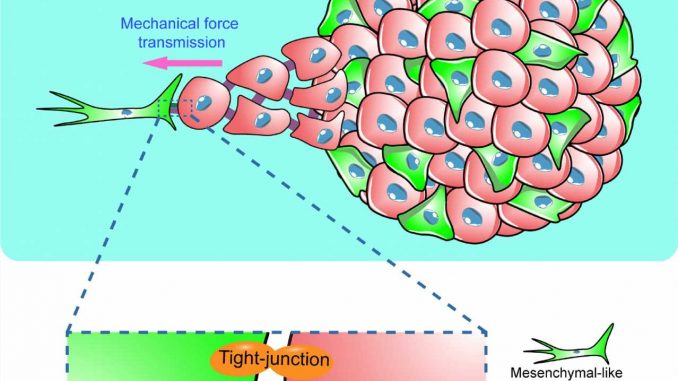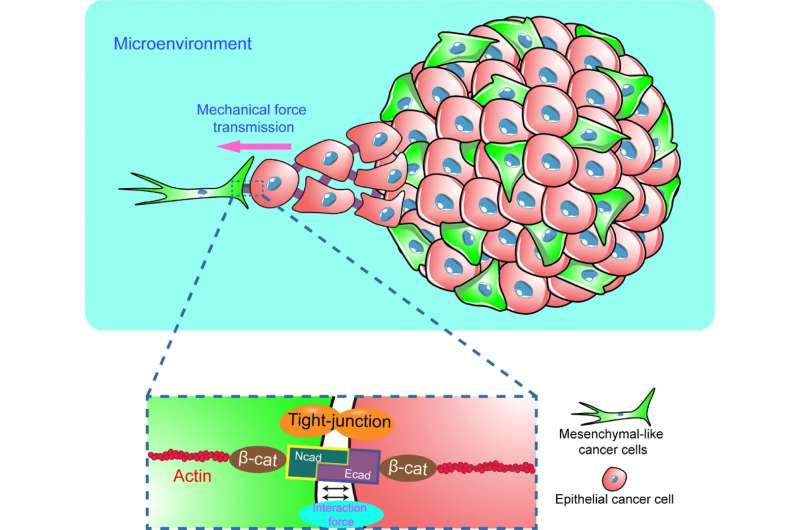

Recently, Dr. Feng Lin from the College of Engineering, Peking University, published a research paper in the journal Chinese Science Life Science, revealing the regulating mechanism(s) of cancer cells with mesenchymal-like phenotype within tumor tissue promoting epithelial cancer cell migration and invasion from the perspective of mechano-biology.
First, the heterogeneous tumor spheroids mixed with epithelial and mesenchymal cancer cells were constructed using the hanging drop method. It was found that the cells with mesenchymal-like phenotype preferred to dominate in the peripheral region during tumor spheroid self-organization. The authors found that mesenchymal-like cells migrated out of tumor spheroids faster and guided epithelial cancer cell migration and invasion through 2D dispersion and 3D invasion assays.
This process is regulated by the enhanced contractility of tumor cells after EMT phenotypic switch, and is pertinent to the stiffness of the microenvironment. It can effectively prevent the invasion of tumor cells by inhibiting cell contraction. The authors also found that N-cadherin on the surface of mesenchymal-like cells and E-cadherin on the surface of epithelial cells can form a heterophilic complex, which exercises the transmission function of mechanical force from mesenchymal-like cells to epithelial cells.
Source: Read Full Article